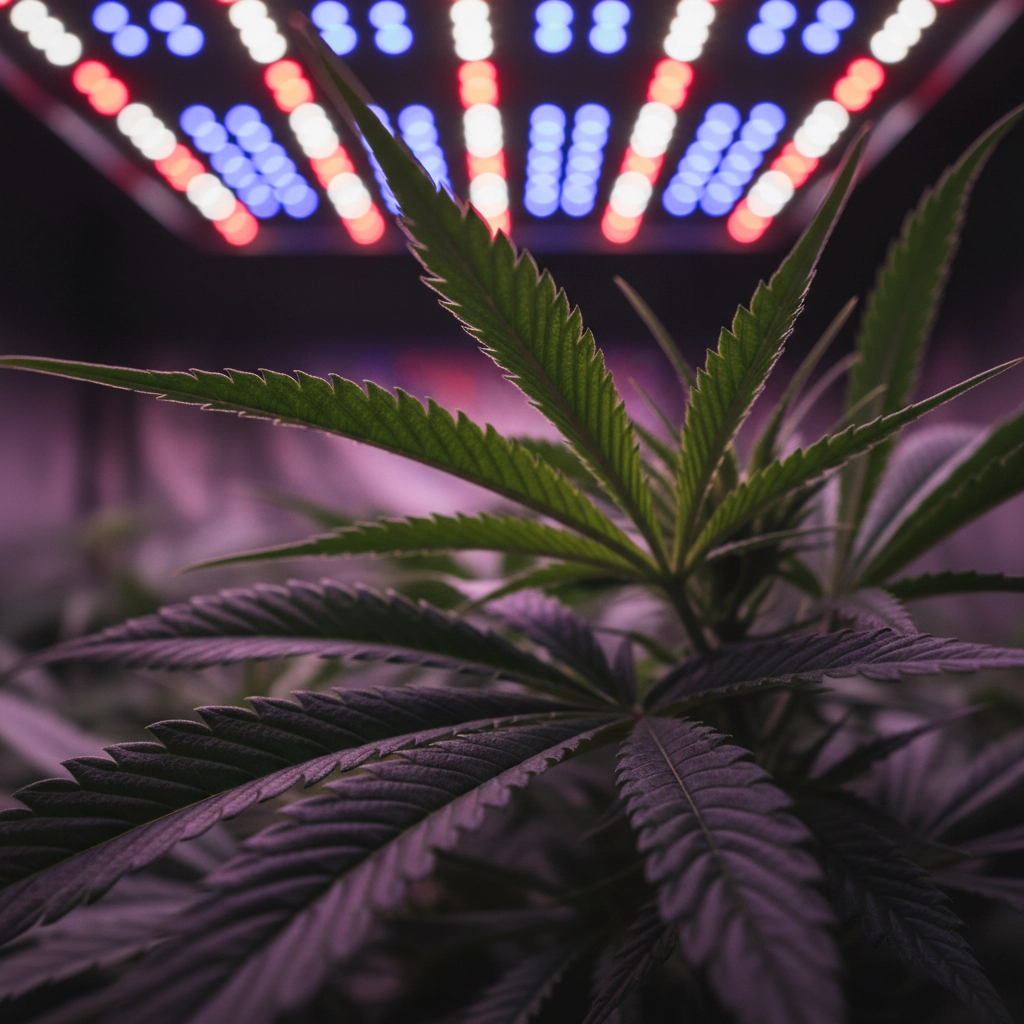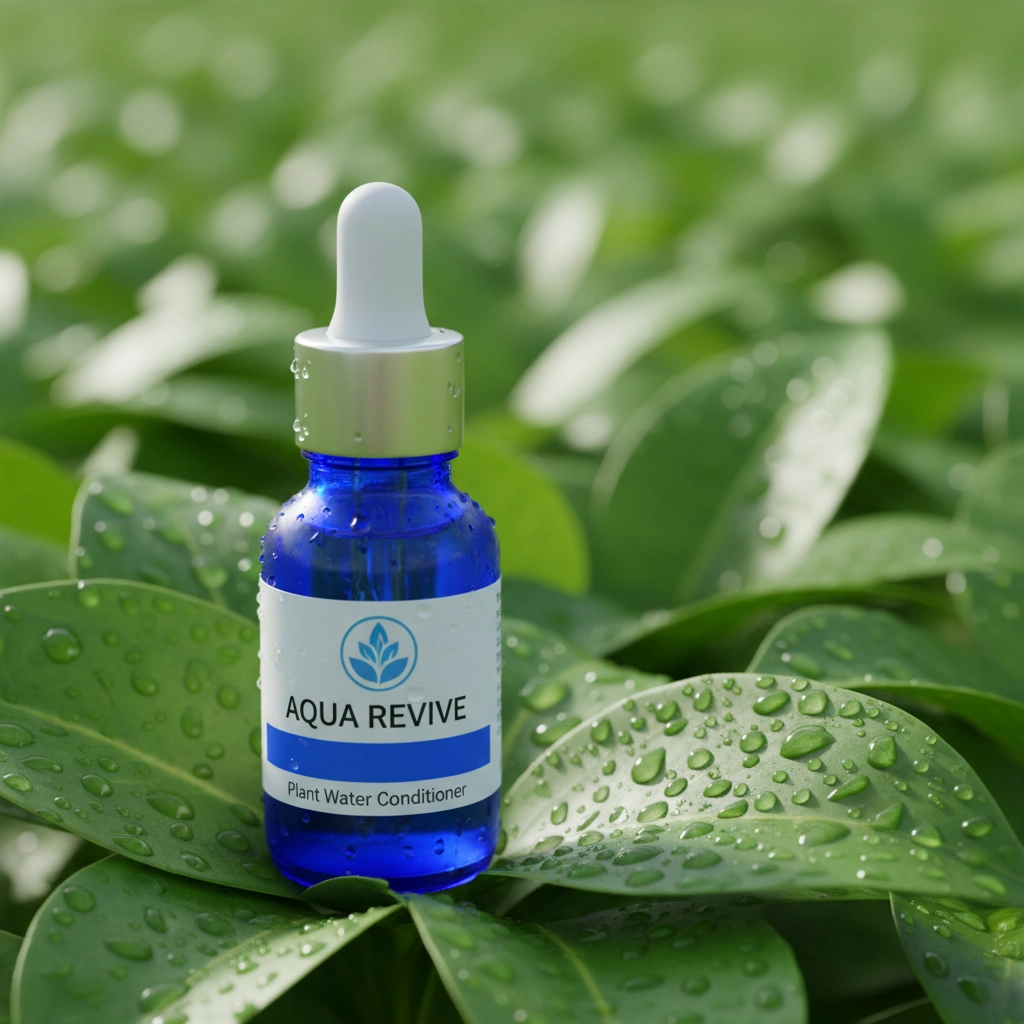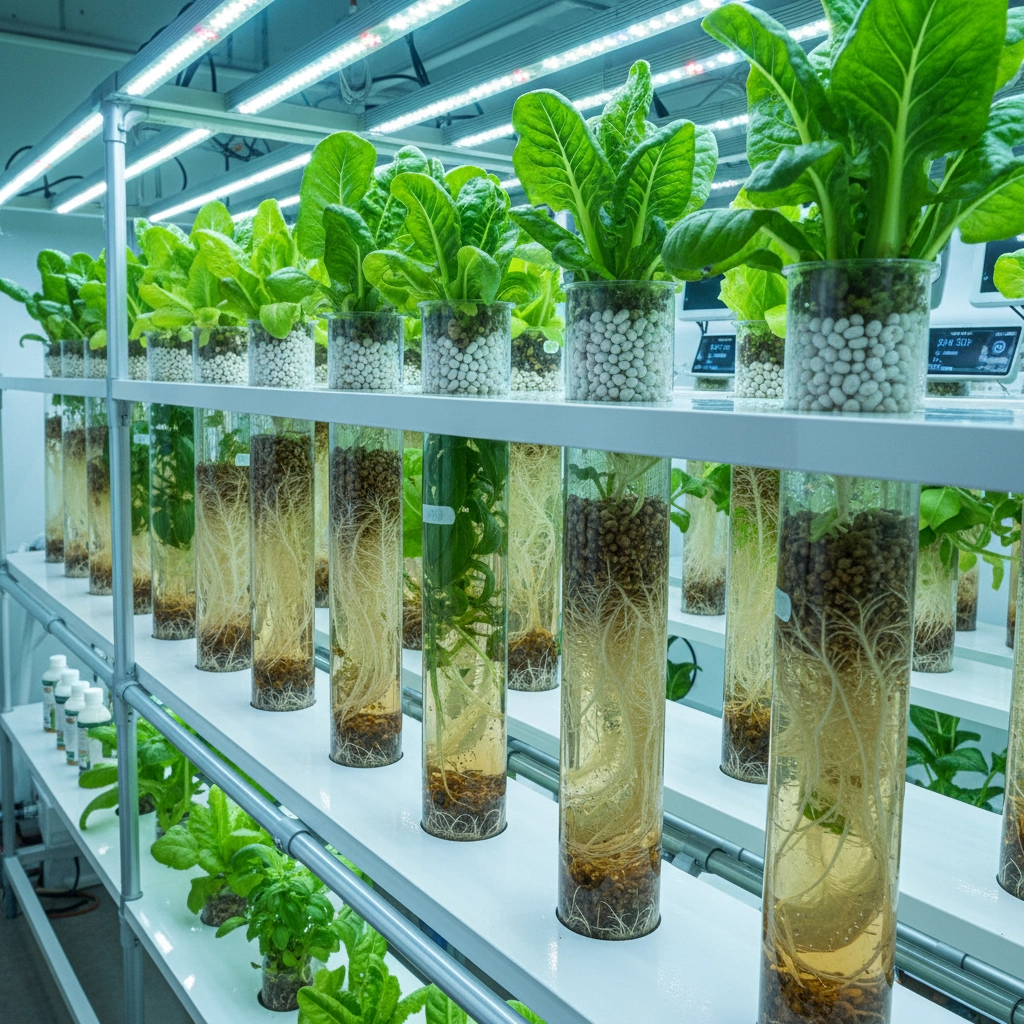Blog
Photosynthesis Demystified: How Light, Water, and CO₂ Feed Every Leaf
Ever wonder what's actually happening inside your plants when they're growing? Photosynthesis is the engine that drives every leaf, bud, and branch in your garden. Understanding this process isn't just science class trivia: it's the key to becoming a better grower and getting bigger yields from your setup.
At its core, photosynthesis is your plant's way of making food. It takes three simple ingredients: light, water, and carbon dioxide: and transforms them into the sugars that fuel growth, plus oxygen as a bonus byproduct. Think of it as nature's solar panel system, except instead of charging your phone, it's building the compounds that create those dense, resinous buds you're after.
The Light Factor: More Than Just Brightness
Light is the powerhouse of photosynthesis, but not all light is created equal. Your plants are picky about their wavelengths, with red and blue spectrum light being the heavy lifters in the photosynthesis department.
During the light-dependent reaction (the first stage of photosynthesis), chlorophyll in your plant's leaves captures photons and uses that energy to split water molecules. This creates the energy currency (ATP and NADPH) that your plants need for the next stage. Without adequate light intensity and the right spectrum, this whole process slows down dramatically.
For indoor growers, this is where your lighting setup becomes critical. Traditional HPS lights work well for flowering because they're heavy in red spectrum, but they're energy hogs and create heat issues. KIND LED grow lights solve both problems by delivering full spectrum light at lower wattages while running cooler.

The key is understanding your plants' daily light integral (DLI), basically how much light they need over 24 hours. Most plants thrive with 20-40 moles of light per day, but you'll need to dial this in based on your specific strain and growth stage. Too little light and photosynthesis crawls. Too much and you're wasting electricity while potentially stressing your plants.
Water Quality: The Hidden Variable
Water does more than just keep your plants from wilting. In photosynthesis, water molecules get split apart to provide electrons and protons for the chemical reactions. But here's what most growers miss: water quality directly impacts how efficiently this happens.
Tap water often contains chlorine, chloramines, and dissolved minerals that can interfere with nutrient uptake and photosynthesis. Plants evolved to use clean, mineral-balanced water, not the chemical soup that comes out of most faucets.
This is where water conditioning becomes essential for serious growers. Drops of Balance isn't just another additive: it's designed to restore water to its natural, plant-friendly state by removing harmful chemicals and adding back essential trace minerals that support photosynthesis.
In hydroponic systems, water quality becomes even more critical. Your nutrient solution is the only source of minerals your plants can access, so starting with properly conditioned water ensures maximum nutrient availability and photosynthetic efficiency.

pH also plays a crucial role here. Most plants photosynthesize most efficiently when their root zone pH stays between 5.5-6.5 in hydro, or 6.0-7.0 in soil. Outside this range, even perfect light and CO₂ levels won't compensate for poor nutrient uptake.
Carbon Dioxide: The Limiting Factor
CO₂ is often the bottleneck in photosynthesis, especially in indoor grows. During the light-independent reaction (Calvin cycle), plants grab CO₂ from the air and use the energy stored from the light reactions to build sugars. But here's the catch: atmospheric CO₂ is only about 400 parts per million (ppm), which isn't optimal for most plants.
In sealed growing environments, CO₂ levels can actually drop below atmospheric levels as your plants consume what's available. This is why many serious growers run CO₂ supplementation, boosting levels to 1200-1500 ppm during lights-on periods.
But CO₂ supplementation only works if your other factors are dialed in. Think of photosynthesis like a three-legged stool: light, water, and CO₂. If any leg is weak, the whole system becomes less stable. Adding more CO₂ to a light-limited or water-stressed plant is like pressing the gas pedal when your engine is already redlining.
Temperature and humidity control become crucial when running higher CO₂ levels. Plants can utilize more CO₂ at slightly higher temperatures (80-85°F vs. the normal 75-80°F), but you'll need adequate ventilation and climate control to maintain these conditions safely.
Putting It All Together: The Hydroponic Advantage
Hydroponic systems give you unprecedented control over the photosynthetic process. Instead of hoping your soil has the right balance of nutrients and pH, you're delivering exactly what your plants need, when they need it.
In soil growing, plants spend energy growing extensive root systems to hunt for nutrients. In hydro, those same nutrients are readily available in the root zone, allowing plants to redirect that energy into photosynthesis and above-ground growth. This is why hydroponic plants often show faster growth rates and higher yields.
The key components of an effective hydroponic photosynthesis optimization strategy include:
1. Consistent Nutrient Delivery Your reservoir should maintain stable pH and EC levels. Fluctuations stress plants and reduce photosynthetic efficiency. Quality containers and monitoring equipment make this much easier to manage.
2. Root Zone Oxygenation Roots need oxygen to properly uptake nutrients that fuel photosynthesis. Air stones, water pumps, and proper reservoir design ensure roots stay healthy and active.
3. Environmental Controls Temperature, humidity, and air circulation all impact photosynthetic rates. Sealed environments with proper climate control allow you to optimize all variables simultaneously.

Common Photosynthesis Problems and Solutions
Light Burn vs. Light Stress Too much light can actually damage the photosynthetic apparatus in leaves, causing bleaching or "light burn." This typically happens when lights are too close or when you increase intensity too quickly. Start with manufacturer recommendations and adjust gradually while watching for stress signs.
Nutrient Lockout Even with perfect light and CO₂, photosynthesis suffers if plants can't access nutrients. This often happens with pH issues, over-fertilization, or salt buildup. Regular reservoir changes and proper water conditioning prevent most lockout problems.
CO₂ Poisoning While rare, extremely high CO₂ levels (above 2000 ppm) can actually harm plants and become dangerous for humans. Always use proper monitoring equipment and ventilation when supplementing CO₂.
The Bottom Line for Growers
Understanding photosynthesis isn't about becoming a plant scientist: it's about recognizing that every aspect of your grow room impacts this fundamental process. Your lighting schedule, water quality, nutrient mixing, and environmental controls all work together to either enhance or limit photosynthetic efficiency.
The growers who consistently get the biggest yields and highest quality are the ones who optimize all three photosynthetic inputs: full-spectrum lighting at appropriate intensities, properly conditioned water with balanced nutrients, and adequate CO₂ levels in a controlled environment.
Whether you're running a small tent setup or a commercial operation, these principles scale. Start with quality components: proper lighting, water conditioning, and environmental controls: then fine-tune based on how your plants respond.
At Perfect Gardens, we've seen too many growers struggle with one piece of the puzzle while neglecting others. The most successful operations treat photosynthesis as an interconnected system where every component matters.
Remember: your plants are solar-powered sugar factories. Give them clean fuel (conditioned water), proper energy (quality light), and adequate raw materials (CO₂ and nutrients), and they'll reward you with the kind of growth that makes all the investment worthwhile.
The science is complex, but the application doesn't have to be. Focus on controlling what you can control, monitor your plants' responses, and adjust accordingly. That's how you turn photosynthetic theory into real-world growing success.
